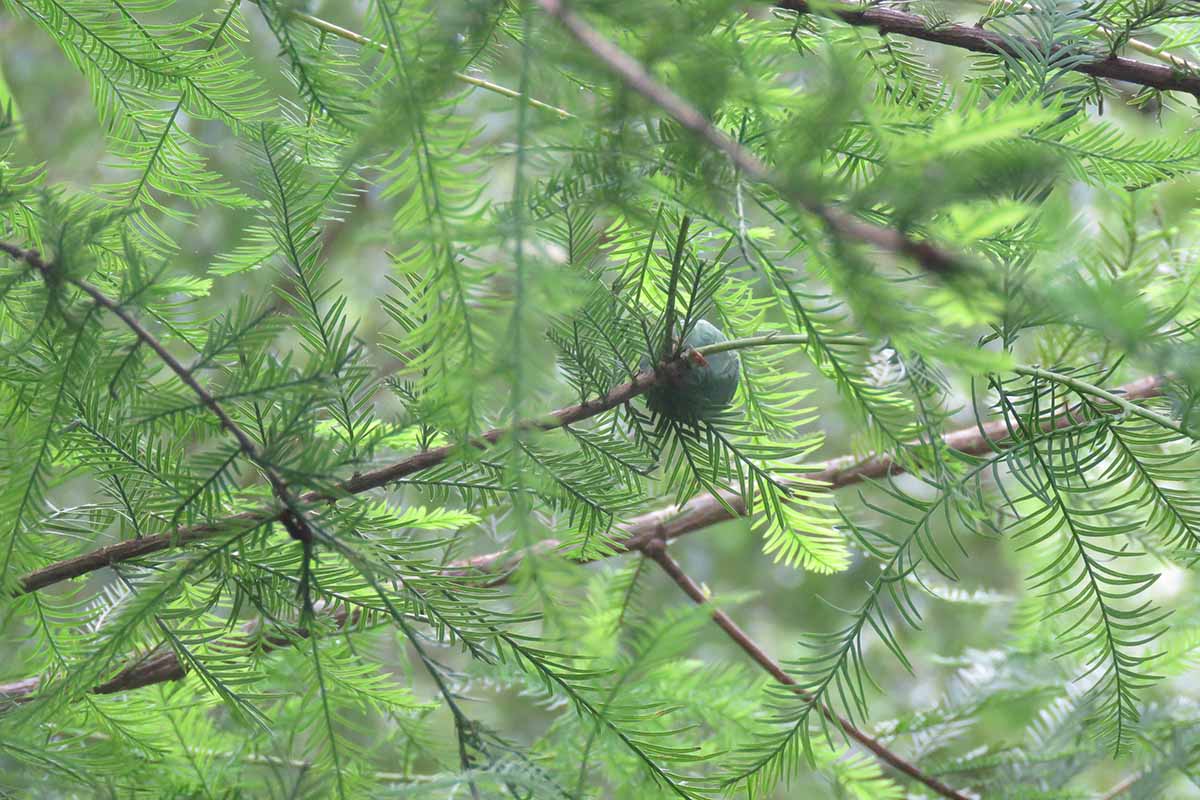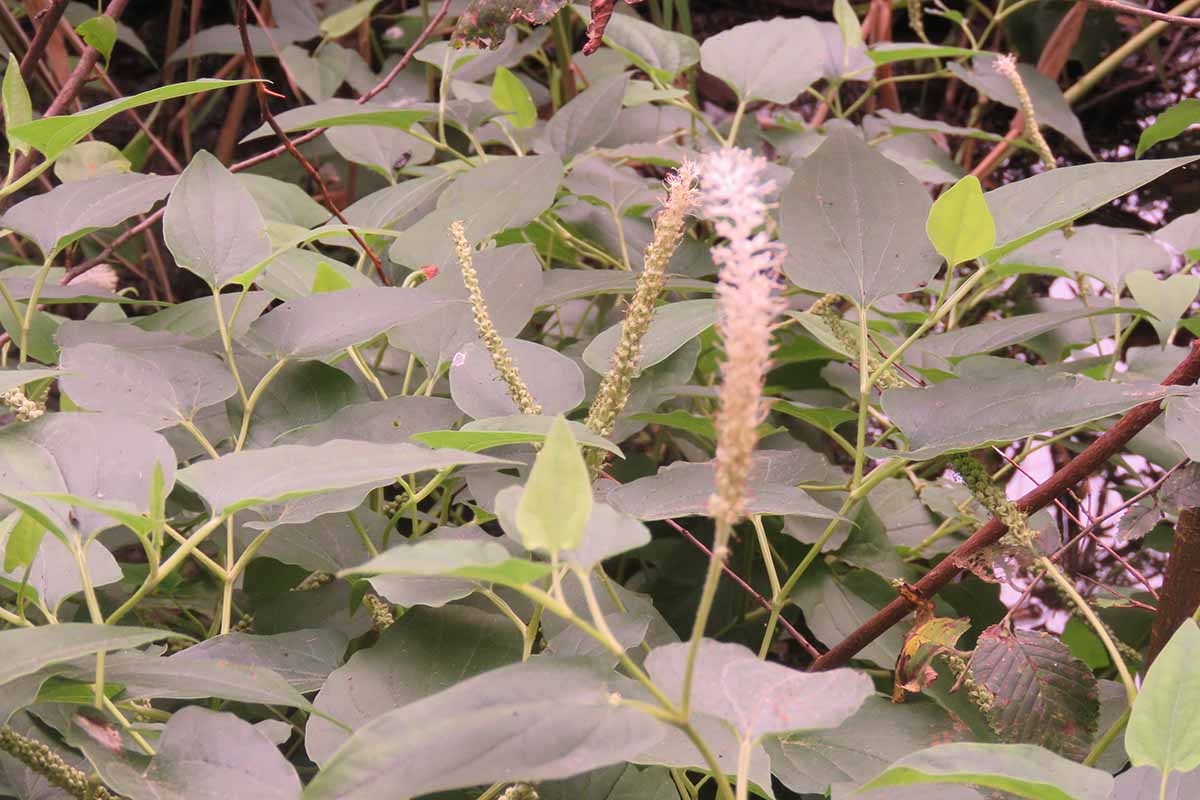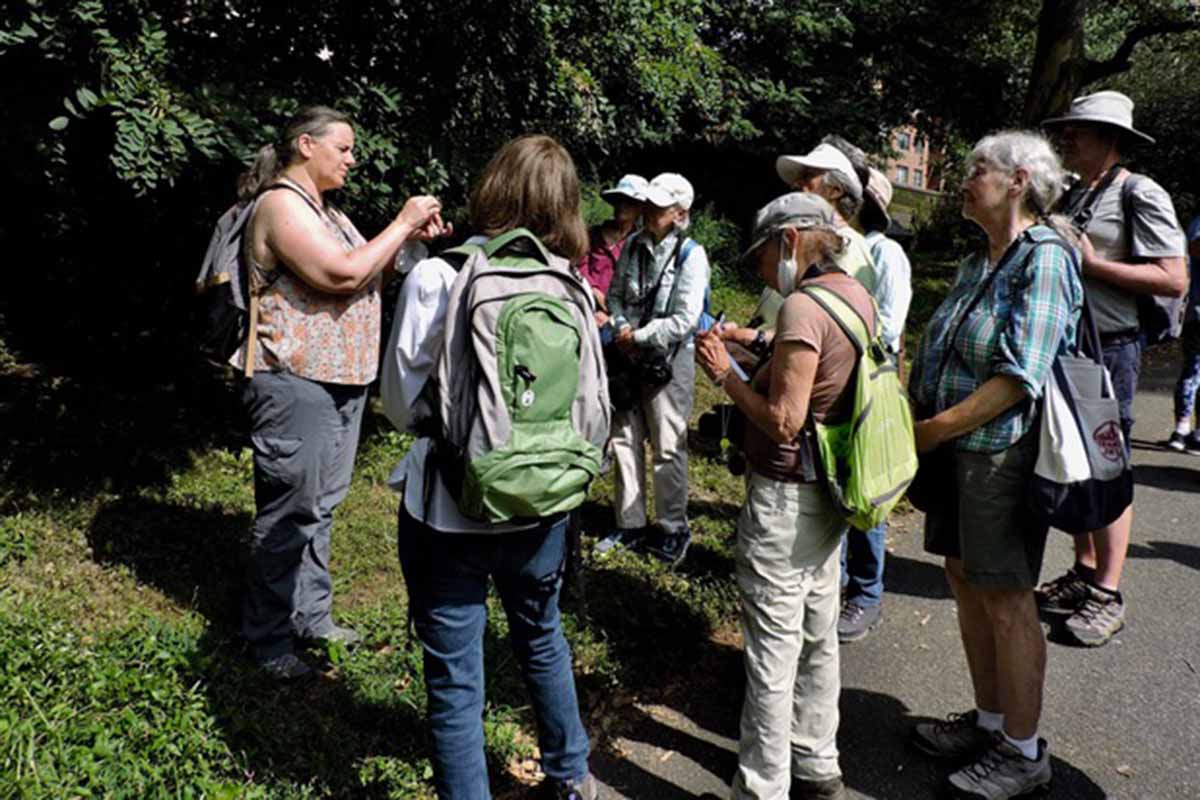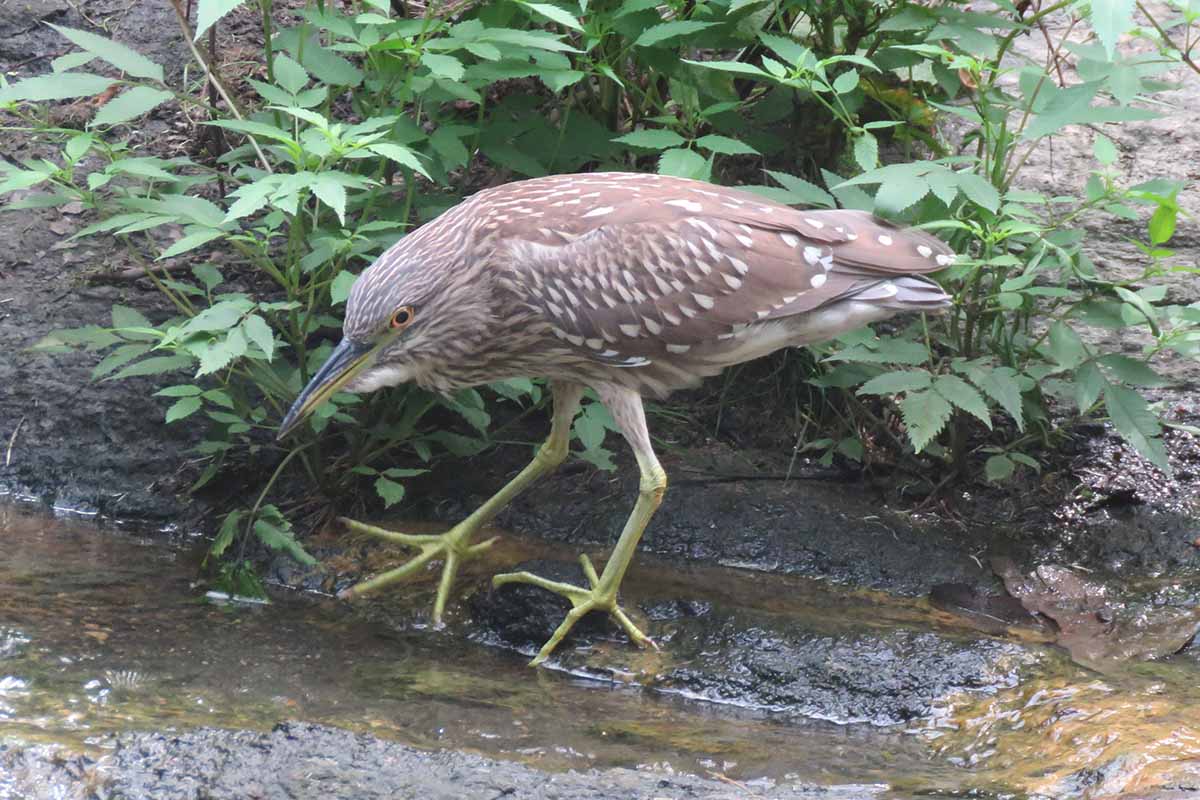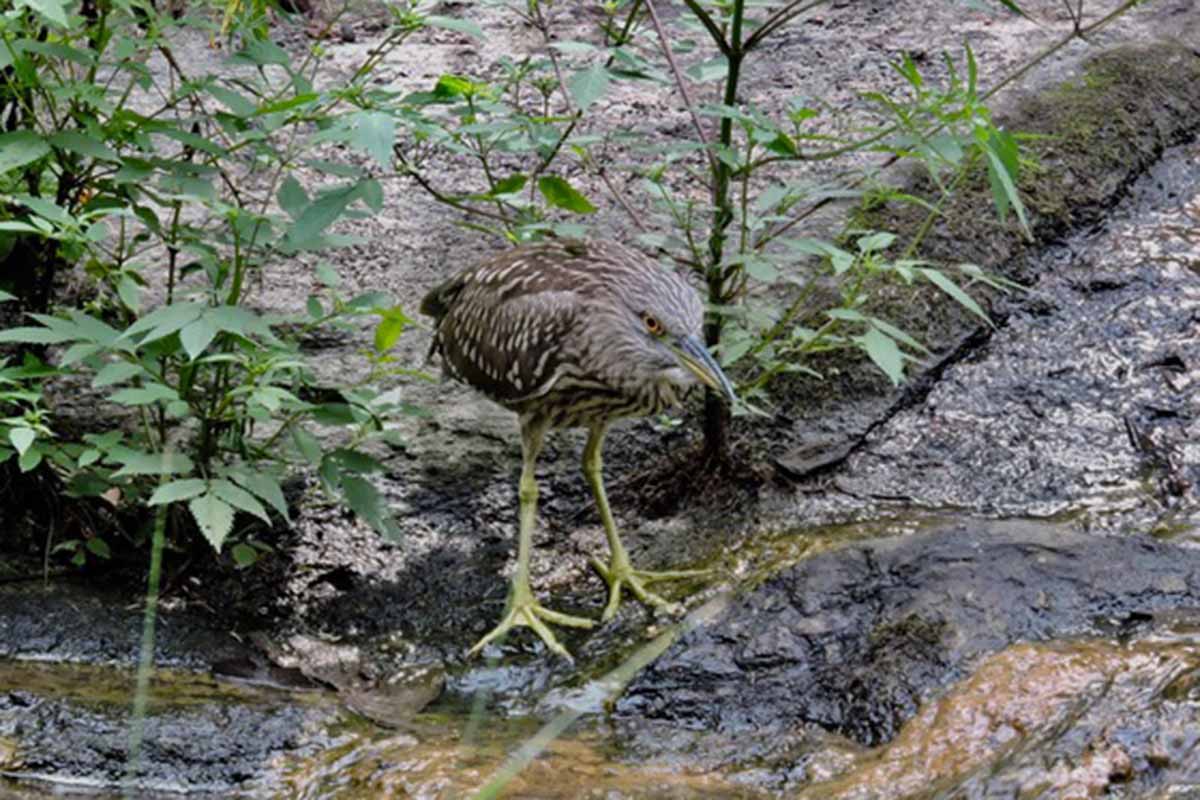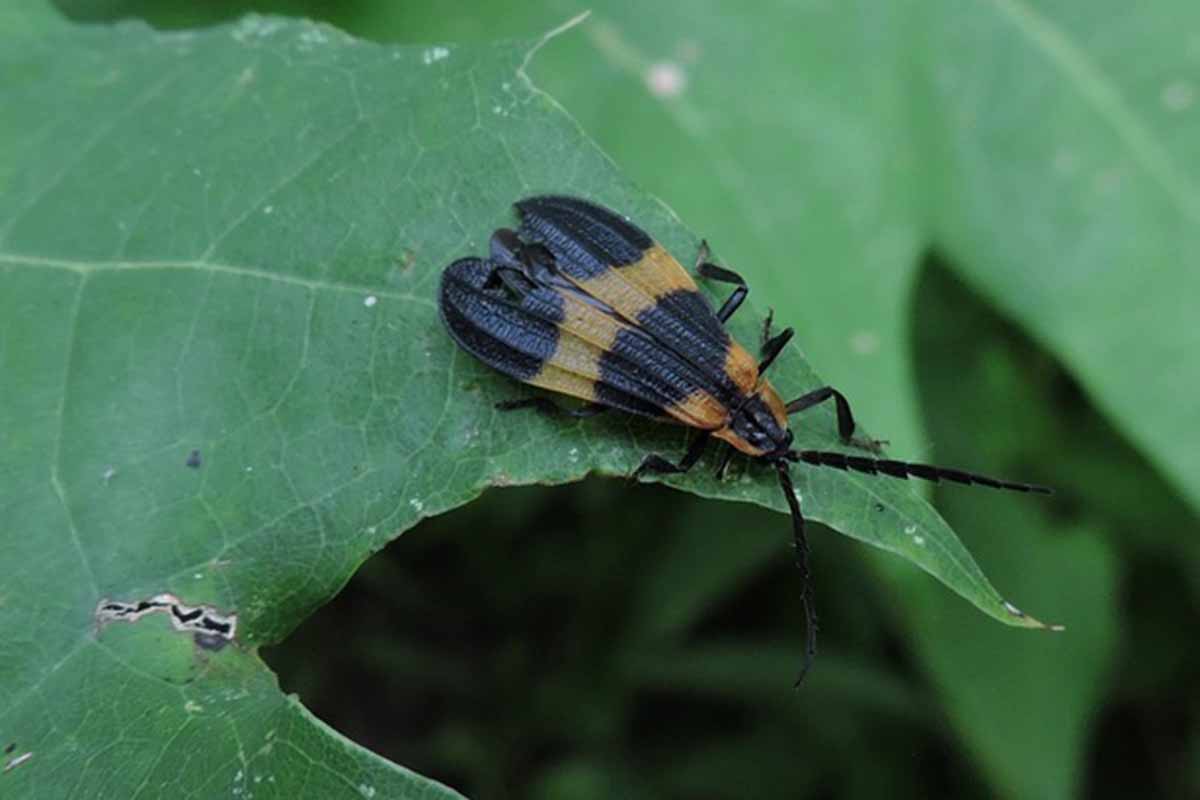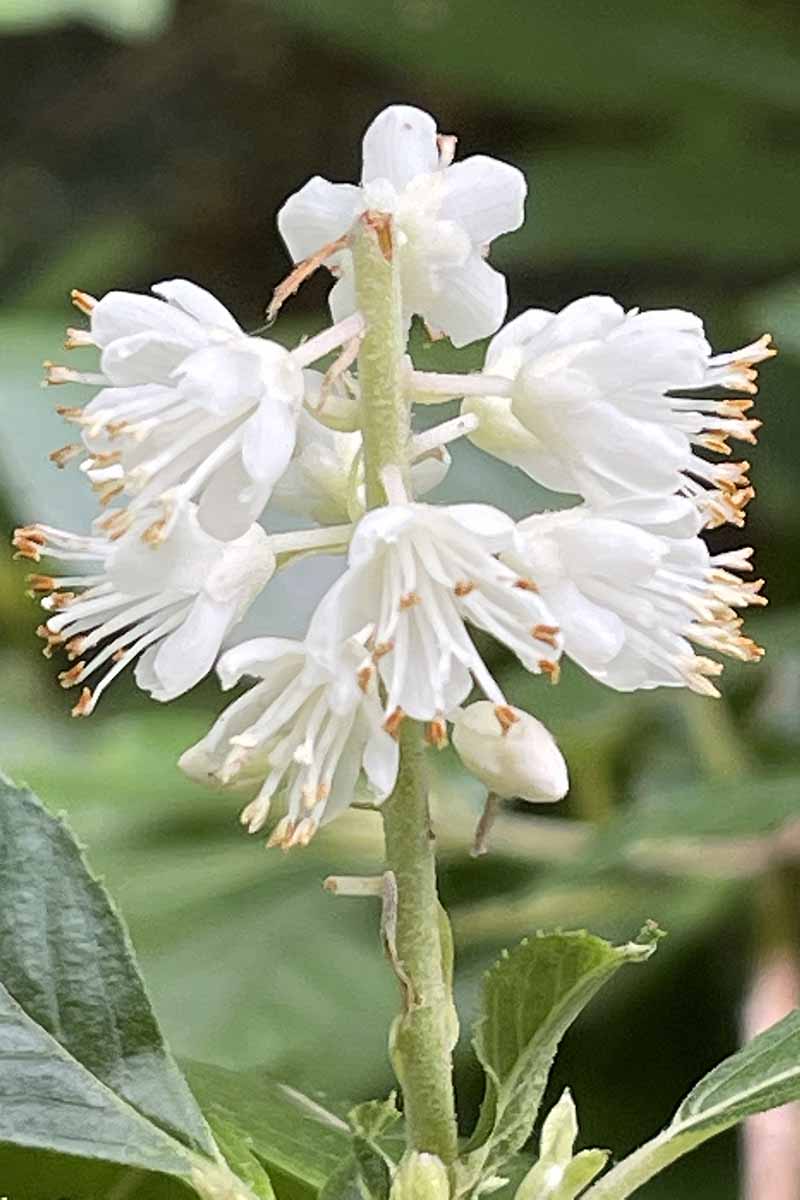Registrar: Anne Lazarus
Participants: 20
Weather: 70’s-80’s, calm, sunny
Bird Species: 15
Plants evolved on land from algae. They have evolved a variety of strategies for survival and reproduction and have adapted to the available resources and demands of the environment. We explored the plant ecology of the Central Park Pool and surrounding area, as well as the adjacent woodlands.
We began by examining some of the trees in the vicinity of the Pool. We studied their reproductive adaptations and defenses against predation.
We compared the simple leaf of the Green Hawthorn to the Compound leaf of the Black Locust. The compound leaf is divided into leaflets along the midrib, and the leaflets do not have leaf buds. The leaf bud is found at the base where the attachment is to the stem. The simple leaf and its leaf bud are also attached to the stem The Black Locust produces seeds in a seed pod, which are dispersed by gravity, wind and birds. The Green Hawthorn (rose family) produces fruit. Its seeds are dispersed when birds consume the fruit. Three methods of seed dispersal include animal, wind and mechanical. Touch a Virginia Knotweed or Jewelweed, and the seeds will jump. Observe the wind- blown seed dispersal of the winged Maple seeds.
Our native plants play significant roles supporting the ecological balance of the Pool. Plants surrounding the Pool, such as Lizard’s Tail, Joe-Pye Weed, American Plantain (even the non-native English Plantain) and other plants absorb Nitrogen and Phosphorous. Nitrogen and Phosphorous run-off support algae growth, which contributes to the deoxygenation of the water. Duckweed (one of the smallest flowering plants) and Watermeal (the smallest flowering plant in the world) photosynthesize and release oxygen, which contributes to the dissolved oxygen in the Pool water. Other aquatic life is supported by this process, within a balanced ecology. We examined both the native and non-native plantain. To the casual observer they look the same, but the English Plantain (non-native) has a white leaf base, and the American Plantain (native) has a red leaf base.
The Bald Cypress is a conifer and unlike most conifers, and sheds its needles in autumn. When it grows in water its roots extend above the surface to form “knees” to access oxygen. When the tree grows away from water, it does not grow “knees”. The Tuliptree also borders the Pool. It grows quickly to maturity. When growing in a woodland or open area it sheds its lower limbs and concentrates its energy on its leafy crown to maximize sunlight exposure. Black Cherry provides important nutrition to our Central Park birds. Birds, butterflies and other insects feed on the flowers of the Black Locust. The seeds are also nutritious. London Plane is a hybrid of the American Sycamore and the Asian Plane Tree. Its seeds are not fertile, and it does not regrow on its own. This tree sheds bark to eliminate parasites and fungus, but the American Sycamore does not shed its bark. The wood of the American Hornbeam is exceptionally hard. Its seeds are found in its samara, a leafy structure, which is wind dispersed. The Sweet Bay Magnolia is a lovely, native tree and is related to the Tuliptree, also in the Magnolia family. The Red Oak produces acorns, which are dispersed by animals.
Flowering plants are abundant. Our native rose is the Carolina Rose. The stipule of a native rose, located at the base of a leaf stalk or petiole is smooth, but the stipule of a non-native rose has hairy fringes. Bees love to visit the roses. Virginia Knotweed (native) and Smartweed (non-native) are Polygonaceae, buckwheat family. They have a sheath, which is a leaf-like structure where the blade attaches to the stem.
Four very important plants for our birds and insects are Pokeweed, Poison Ivy, Jewelweed and the fragrant Sweet Pepperbush Pokeweed seeds are an important food source for our birds. Poison Ivy attracts sixty species of bird and is rich in essential fatty acids and protein. It does not choke our trees and is easily and sensibly managed without herbicides. Jewelweed is an important food source for hummingbirds. It is an annual. It grows to completion each summer and then dies back. Sweet Pepperbush is a source of pollen for many butterfly species and other pollinators. It is tolerant of sun, rain and a variety of soils.
Ferns reproduce from spores. Fern species have specific sporangia patterns on the underside of their pinnae. Sporangia contain the spores, from which new ferns will grow. Some ferns have separate stalks with the sporangia. We examined the sporangia pattern on the underside of the Christmas Tree and Maidenhair pinnae. The Maidenhair belongs to a large family of ferns.
Lichen consist of two symbiotic organisms. Each lichen species has a specific alga and a specific fungus. The fungus provides the alga with external nutrients, and the alga provides sugars to the fungus. We saw lichen growing on the rocks. Lichen are considered organisms.
Two non-native invasive plants are Porcelain Berry, a vine which can smother trees and non-native Hedge Vine, which crowds out almost all other plants.
We had an opportunity to observe the egg of the Lacewing, which is supported by a thin, vertical filament. The filament protects the Lacewing from predators such as ants. Lacewings are beneficial insects and consume aphids and other pests. Another interesting insect was the predatory Banded Net-winged Beetle. We carefully examined a branch covered with aphids. Leafminers also captured our attention. Leafminers are insects, which include certain species of flies, moths and wasps. The insect lays an egg under the epidermis of a leaf. The larvae tunnel through the leaf consuming epidermal leaf tissue and eventually emerge as adults. They leave track marks, which can be specific to the species. We examined a leaf with track marks. Some plants, such as Which Hazel create protective leaf galls. Insect larvae (specific to the species) determine the shape and size of the gall and emerge as adults.
In 2008 a violent storm swept through the north end of Central Park uprooting many trees. The park has since recovered with restored meadows and the planting of many native trees.
Species Lists
Birds
Canada Goose
Mallard
Rock Pigeon
Black-crowned Night-Heron
Downy Woodpecker
Red-eyed Vireo
Blue Jay
European Starling
American Robin
House Sparrow
Common Grackle
Black-and-white Warbler
American Redstart
Yellow Warbler
Northern Cardinal
Plants
Trees
Black Locust
Hawthorn
London Plane
American Sycamore
Black Cherry
Tulip Tree
American Hornbeam
Bald Cypress
Willow
Sweet Bay Magnolia
Sassafras
Red Oak
Shrubs, Vines and Flowers
Native
Sweet Pepperbush
Witch Hazel
Purple Flowering Raspberry
Pokeweed
Jewelweed
Lizard’s Tail
Spotted Joe-Pye Weed
Poison Ivy
Yellow Wood Sorrel
Sunflower species
Watermeal
Duckweed
Virginia Knotweed
American Plantain
White Wood Aster
Cardinal Flower
Everlasting Pea
Common Burdock
Carolina Rose
Non-native
Lady’s Thumb
English Plantain
Porcelain Berry
Hedge Vine
Fern
Christmas Fern
Maidenhair Fern
Grass
Bottlebrush Grass
Insects
Banded Net-winged Beetle
Aphid species
Lace-wing Egg
Leaf Miner Tracks
Butterflies
Cabbage White
Possible Eastern-tailed Blue
Possible Summer Azure
Monarch
Odonates
Green Darner
Black Saddlebags
Eastern Amberwing
Blue Dasher
Mammals
Eastern Gray Squirrel
Eastern Chipmunk
Brown Rat
Herps
Bull Frog (h)
Red-eared Slider
